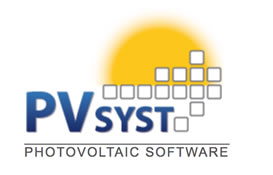
HelioScope Screen Shot
The latest release of HOMERⓇ Pro – version 3.11 – is now integrated with two powerful tools for designing PV systems, HelioScope and PVsyst.
This development is exciting to me for several reasons:
For the distributed energy marketplace to really take off, we need many more people who are comfortable with designing distributed power systems that incorporate hybrid renewable energy components. And that means practical, user-friendly design tools. This development advances what I consider to be an important priority for HOMER Pro. Namely, making it easy for people who aren’t necessarily power engineers to use the software to model solar-plus-storage systems and microgrids quickly and accurately.
This is a key software update that reflects important trends in the renewable energy industry – the plummeting cost of energy storage, which is, in turn, fueling the growth of the solar-plus-storage market. That has critical implications for utilities and the growth of distributed renewables.
Storage-Plus-Solar Costs are Declining Rapidly
It’s worth noting that in the U.S. we’ve seen a seven-fold increase in installed storage capacity over the last decade, and battery costs have declined by more than 65% in the last seven years. The World Bank estimates that in developing countries the annual growth in energy storage capacity will exceed 40% each year over the next decade.
Increasingly, top utility-scale installers are bidding hybrid projects, and large, diversified energy conglomerates have been buying up storage startups during the past two years. On the solar side, 2016 was a record-breaking growth year for the solar industry, almost doubling 2015 installed capacity, with 14,762MW completed. According to the Solar Energy Industries Association (SEIA), U.S. solar PV capacity is expected to nearly triple over the next five years. Because of both these trends, the costs of new solar-plus-storage projects are falling rapidly. Most important, these hybrid projects are now beginning to prove their worth in providing alternatives to traditional grid upgrades, or other capital projects that utilities might have chosen in the past, such as natural gas peaker plants.
All of this is an important reason to provide solar developers with user-friendly tools to understand the complexities and tradeoffs of microgrid development. They need to be able to determine early stage project feasibility, define optimal system sizes and gauge project capital and operating costs, as well as payback periods.
Most of the solar design tools in use today don’t include the ability to model storage, or to simulate multiple system types and then determine optimal size and configuration. That’s where HOMER Pro comes, in, and that’s why we’re excited about these new integrations with HelioScope and PVsyst.
How do HelioScope and PVsyst Work with HOMER Pro?
Essentially, developers can define their solar projects first in HelioScope or PVsyst, then import the output into HOMER Pro. In the case of HelioScope, we have made it even easier. Users can just provide a login within HOMER Pro, choose the project they want to import, and HOMER Pro will do the rest. It’s also possible to simply upload a HelioScope output file, as is the case with PVsyst. HOMER Pro will then use the solar production data to find and compare optimal systems that include storage, and output financial and engineering data.
We hope the availability of tools that make it easy to design and compare solar-plus-storage systems will help hybrid systems earn their rightful place in the lineup of energy choices.
| All these software tools offer free trials. Download them and test them out! | ||
 |
 |
 |
- To learn more about HOMER Energy, please visit our website.
- For more news and insight about the microgrid industry, please subscribe to our newsletter:
[pardot-form id=”328″ title=”MicroGrid News Subscribe Page Short Version”]
